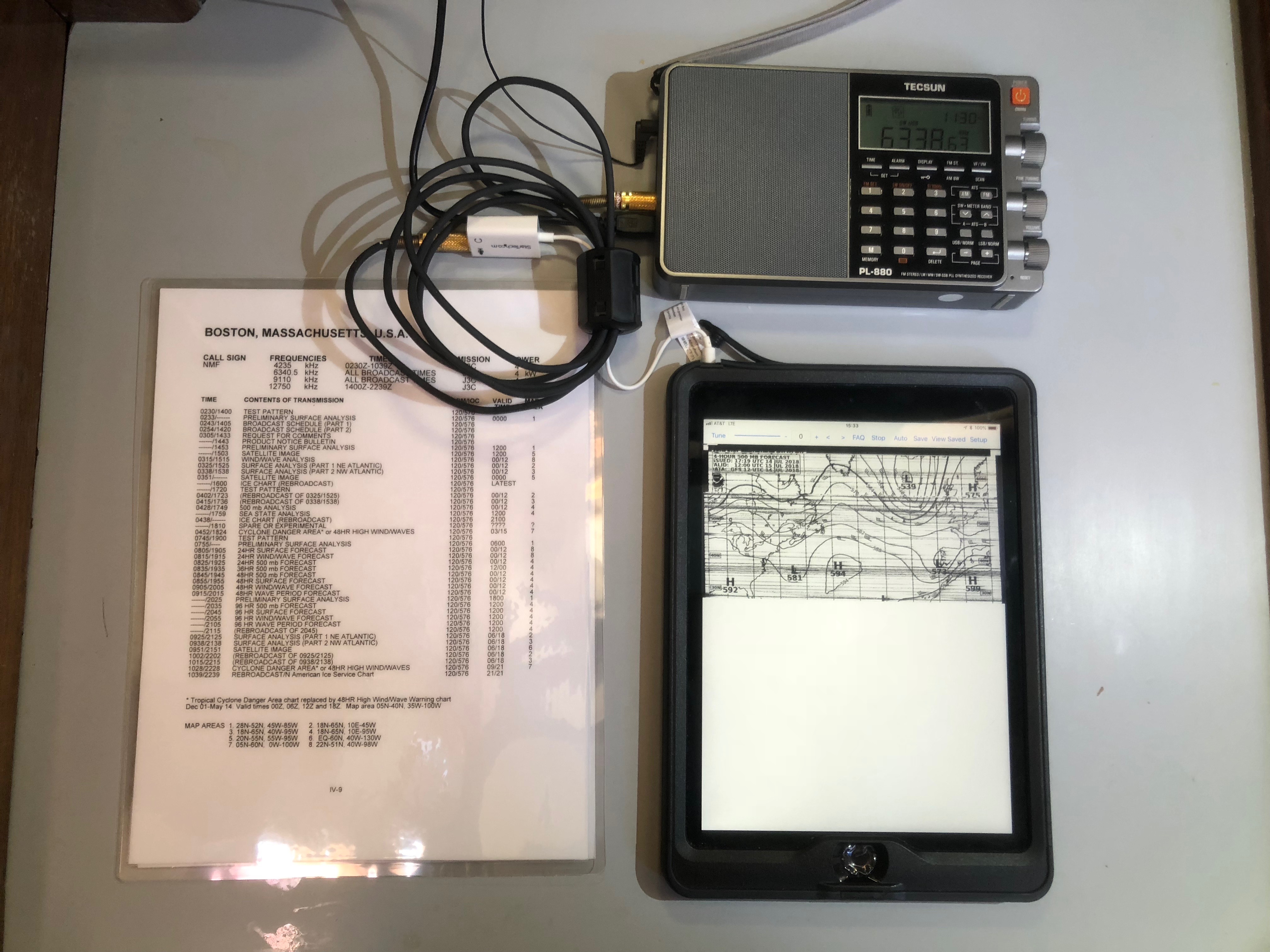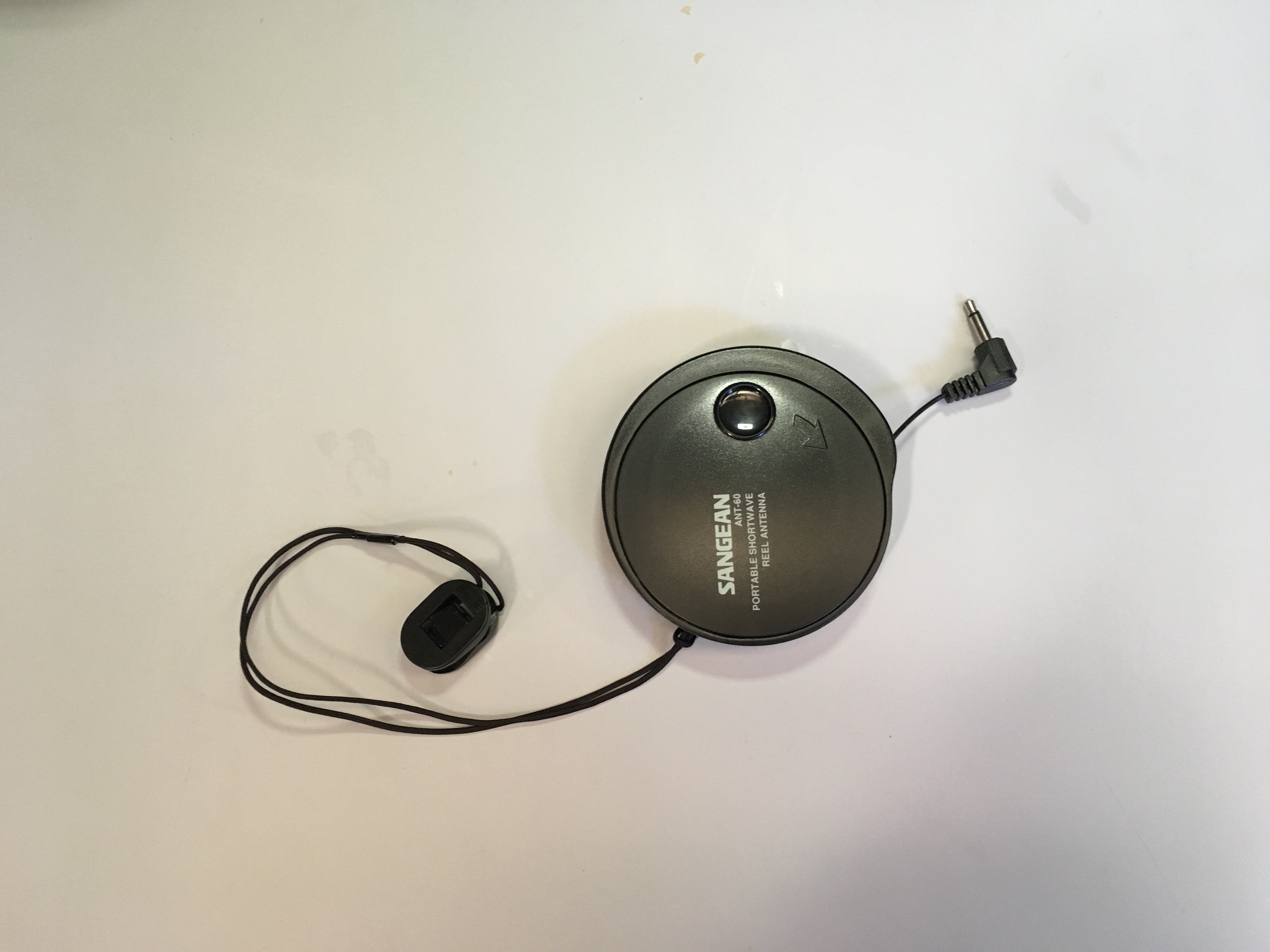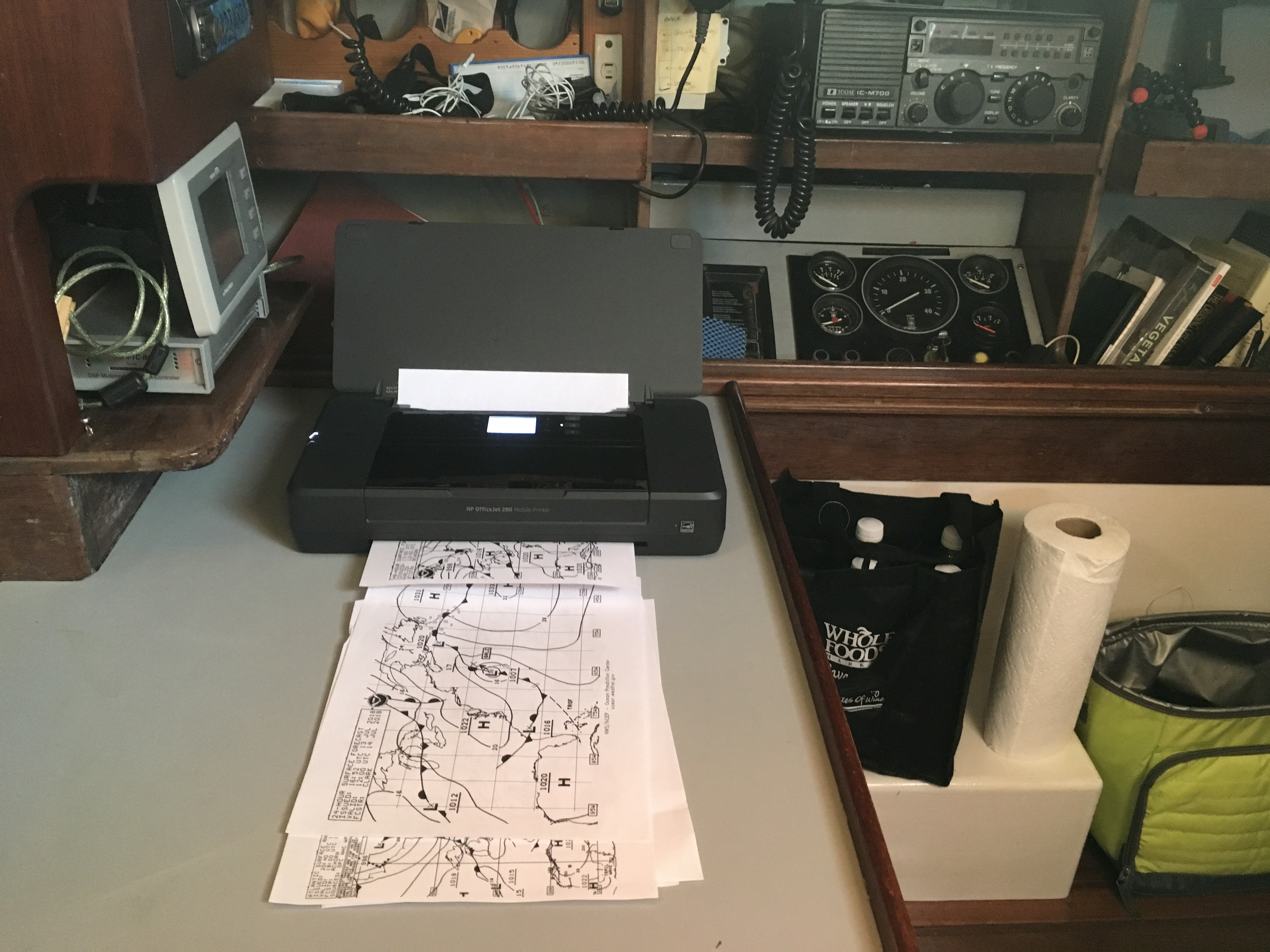If so, that would enable me to receive weather faxes by SSB at least while anchored, or when I had the energy/time at sea to tend to the reception.
That encouraged me to take another look at it, and to see whether they were correct -- at least with Petronella's specific combination of house batteries and solar panels.
No-Power Weather Fax System
The first thing I tried (or re-tried) was using a system that was completely independent of P's house batteries. I could run this to my hearts content, and never use an electron that might be needed by the fridge, lights, fans, etc.
Since it doesn't take use any electricity from P's house batteries, I call it my No-Power system, although clearly it does take some small amount of power, tapped from the Sun of course.
 |
| The basics: SSB radio and iPad with HF FAX App |
 |
| External Antenna -- this one is really not good enough for WFAX |
 |
| Beefy battery, with its own solar panel to recharge it (not shown) |
 |
| Battery powered, AirPrint enabled portable printe |
1. Tecsun PL 880 portable SSB radio
2. An external antenna3. iPad running HF FAX app
4. A power source independent of house batteries (optional?)
5. Battery-powered, AirPrint enabled printer (optional)
The portable SSB is required to pluck the radio signals out of the air and convert them into sound waves. These sound waves are fed into the iPad and its HF FAX app, which convert the sound waves into images, and the optional printer is used to convert these images into actual hard-copy faxes.
To keep it independent of the house batteries, I use a rather hefty portable power source, which has it's own solar panel to recharge it.
This system seems ideal except for one thing: so far, at least, it produces pretty lousy weather faxes.
 |
| WFAX produced by No-Power System |
I'm blaming the antenna at this point, since the radio itself seems high quality. I will continue to work on this system to improve the quality.
Here is the No-Power system in action:
Low-Power Weather Fax System
Since I could not get quality results from my No-Power system, I started testing my Low-Power system. The only difference is I use Petronella's ICOM SSB and its tuned backstay antenna. All other components are the same:
1. ICOM IC-M700 SSB radio
2. Tuned backstay antenna
3. iPad running HF FAX app
4. A power source independent of house batteries (optional?)
5. Battery-powered, AirPrint enabled printer (optional)
 |
| Low-Power System |
Never assume!
After being chastised by a number of readers, I decided to put together this low-power system and to let it run for the two hours needed to download a complete set of Weather Faxes. This made me absurdly nervous -- I really didn't want to end up with a dead battery, warm fridge, etc. -- but all for nothing. At the end of the two hours, the battery still had a healthy charge.
I wish I had measured the amp-hours used for this two hour period, but I didn't think of doing that until just now. Next time I try it, I will record the actual power used by the system. (Update: The SSB draws about 2.8 amps in receive mode, so about 6 amp-hours to receive an entire batch of faxes. Not a high cost for such useful information.)
Warning: I performed this test on a sunny day in the Chesapeake, with both P's solar panels working to keep the house batteries charged. I have not yet tried this at night, or even on a cloudy day.
A more modern, energy-efficient SSB would probably use even less power than P's ancient M-700.
That said, the results were much improved. The fax below was received immediately after the one above, on the same frequency. That is, the received signal quality was the same for both faxes. Only the radio and antenna were different.
 |
| WFAX produced by Low Power System |
Conclusions
While it still takes more effort to receive weather faxes over SSB than to receive the same faxes via Satellite phone, and the quality is not quite as good, clearly my battery-energy argument was over-stated. It is clearly possible to build a low-power system that produces acceptable quality faxes without killing off the house battery -- and without using any high-cost satellite air time.
It's also more fun than the sat phone. It's something of a challenge to get good results, and like anything you have to work for, more satisfying to accomplish.
I will definitely be using one of these systems to receive weather faxes, whenever sailing conditions allow.
Thanks to all who got me to take another look at this method.
"Life is for learning." -- Joni Mitchell
Next Up: The Big Push
Excellent post. Thanks John
ReplyDeleteGood job and helpful analysis, consider writing an e-book on the topic.
ReplyDeleteI bet if you put the "no power" system on the back stay, you'll get the same images.
ReplyDeleteI’ve bee wondering the same thing. Will give it a try soon.
Delete